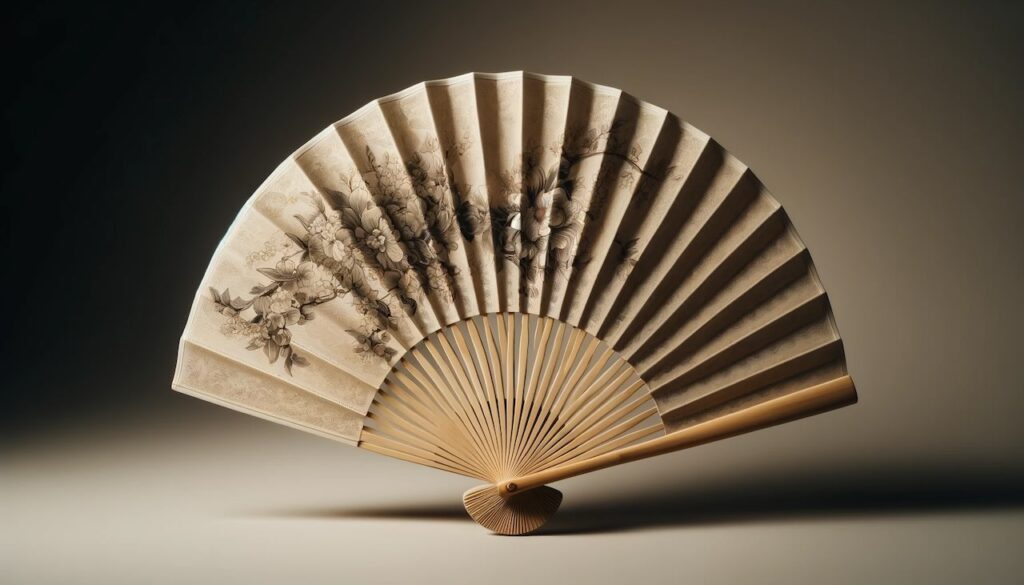When the Japanese summer arrives, one elegant object often found fluttering in hand is the sensu, the folding fan. These beautifully crafted items are more than just tools for cooling off—they’re enduring symbols of Japanese artistry, history, and seasonal sensibility. But where did folding fans originate, and how did they become so deeply embedded in Japanese culture?
Let’s explore the fascinating journey of the sensu—from ancient origins to global recognition.
From China to Japan: The Birthplace of Folding Fans
The earliest fans originated in ancient China, where by the 2nd century BCE, feathered or bamboo fans were already in use. Over time, the Chinese began experimenting with folding mechanisms, adding ribs to their round fans to make them collapsible.
By the 6th century, this innovation reached Japan via the Korean Peninsula. Initially used in court rituals and dances during the Asuka period (592–710 CE), these imported fans began to take on new life in Japan’s own aesthetic landscape.
The Heian Period: Where Artistry Met Aristocracy
In the Heian period (794–1185), folding fans flourished in the hands of nobles and courtiers. They weren’t just practical—they were works of art and status symbols. The sensu appears in classic literary works such as The Tale of Genji and The Pillow Book, often portrayed as accessories for flirtation, poetry, and seasonal expression.
Fans were painted with seasonal scenes, poems, or calligraphy, making each one a portable canvas of personal and cultural identity.
What Does “Sensu” Mean?
The word “sensu” (扇子) combines:
- Sen (扇): meaning “to fan”
- Su (子): a suffix that can suggest something small or endearing
Together, the term evokes an image of a small, elegant tool designed to create a breeze. Depending on the material or function, other names emerged over time—like kamisensu (paper fan) or esensu (illustrated fan).
Craftsmanship and Innovation: From Samurai to Ukiyo-e
As Japan entered the Kamakura period (1185–1333), sensu spread among the samurai class, who used them not only for cooling but also for signaling in battle. By the Muromachi period (1336–1573), Kyoto artisans began producing luxuriously decorated fans, incorporating gold leaf, mother-of-pearl, and intricate lacquer work.
During the Edo period (1603–1868), folding fans reached new heights of popularity among commoners. The rise of ukiyo-e woodblock prints and poetry often featured sensu as both subject and medium. Artisan techniques flourished in regional centers like Kyoto, Marugame, and Takayama, many of which are still active today.
A Cultural Export: Folding Fans Go Global
One of the key figures in the modernization and popularization of sensu was Eiichi Shibusawa, a pioneering industrialist. In 1873, he established Iba Jinshoten, a fan wholesaler in Nihonbashi, Tokyo, that helped usher sensu into the era of mass production.
Under Shibusawa’s vision, sensu became one of Japan’s most successful early exports, especially as souvenirs for foreign visitors during the Meiji period (1868–1912). Folding fans—portable, decorative, and undeniably Japanese—quickly gained international appeal.
The Sensu Today: Tradition in Motion
Today, sensu are found everywhere from summer festivals and tea ceremonies to museum gift shops and fashion boutiques. Whether crafted from washi paper, bamboo, silk, or adorned with modern prints or traditional motifs, they remain beloved for their blend of practicality and artistry.
They also serve as gifts of gratitude, wedding keepsakes, or corporate giveaways—testament to their continuing versatility and cultural significance.
Conclusion: A Breeze of Cultural Heritage
The sensu is far more than a folding fan. It is a cultural artifact that embodies Japanese craftsmanship, seasonal awareness, and refined elegance. Introduced from China, refined in the imperial court, and elevated by generations of artisans, the sensu reflects Japan’s unique ability to adapt foreign ideas into something distinctively its own.
So next time you open a folding fan to catch a summer breeze, remember: you’re holding a piece of history, art, and tradition in your hands.


